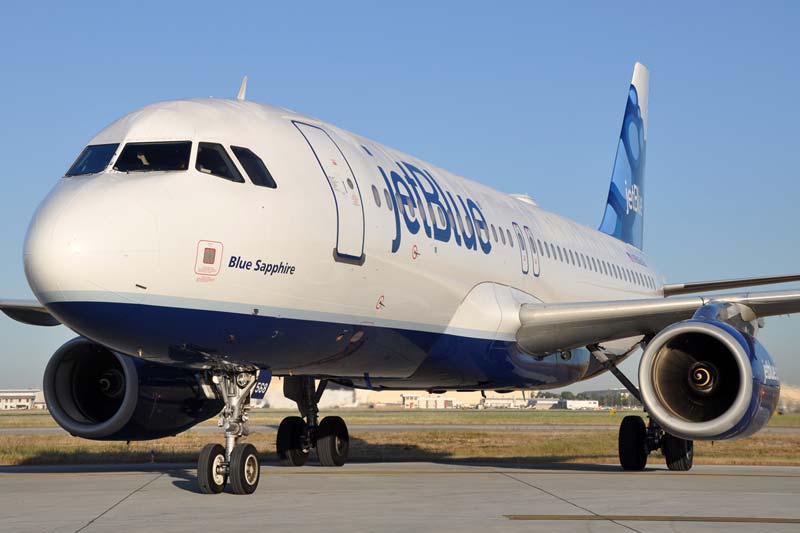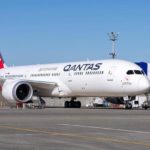
- JetBlue has reported its earnings for the third quarter of 2019.
- While revenue per available seat mile (RASM) went down (0.9)% year over year, operating expenses per available seat mile (CASM ex-fuel), excluding fuel grew 0.3%.
- The growth in operating expenses was better than the low end of the company’s initial guidance range of 0.5% to 2.5%, owing to the compounding benefits of the Structural Cost Program, and the favourable timing of expenses from the third into the fourth quarter of 2019.
- According to the airline’s outlook for the fourth quarter and full year, capacity could go up between 4.5% and 6.5% year over year in the fourth quarter 2019 and between 6.0% and 7.0% for the full year 2019.
- RASM is expected to grow between (3.5)% and (0.5)% for the fourth quarter vis-à-vis the comparable period in 2018. CASM ex-fuel could be between (1.0)% and 1.0% for the fourth quarter of 2019, while it is expected to grow between 0.5% and 1.0% year over year for the full year 2019.
- “We are just beginning to see the benefits of our revenue, cost, fleet and capital allocation efforts, with additional opportunities ahead of us. Despite some near-term pressures on revenue in our international markets and NEO delays, we believe we are on track to deliver on our goal of $2.50 to 3.00 dollars EPS in 2020. I’m particularly pleased with the progress we are making to improve our unit costs as we deliver on our commitments. In the third quarter, we beat the low end of our CASM ex-Fuel guidance, despite over a half point of capacity lost due to Hurricane Dorian. Our improved completion factor more than offset any storm impact,” Robin Hayes, JetBlue’s Chief Executive Officer, said.
- JetBlue recently reported its preliminary traffic results for September 2019 which increased 3.4% as compared to the corresponding period in 2018, on a capacity increase of 2.5%.
PRESS RELEASE
JetBlue Airways Corporation (NASDAQ: JBLU) today reported its results for the third quarter 2019:
Reported diluted earnings per share of $0.63 in the third quarter of 2019 compared to a diluted earnings per share of $0.16 in the third quarter of 2018. Adjusted diluted earnings per share was $0.59(1) in the third quarter of 2019 versus $0.42(1) in the third quarter of 2018. Note A to this earnings release includes the GAAP to Non-GAAP reconciliation between reported and adjusted diluted earnings per share.
GAAP pre-tax income of $254 million in the third quarter of 2019, compared to a pre-tax income of $68 million in the third quarter of 2018. Excluding the one-time items, adjusted pre-tax income of $239 million(1), up 32% from an adjusted pre-tax income of $180 million(1) in the third quarter of 2018.
Pre-tax margin of 12.2%, up from a pre-tax margin of 3.4% in the third quarter of 2018. Adjusted pre-tax margin of 11.4%(1), a 2.4 percentage point increase year over year from an adjusted pre-tax margin of 9.0%(1), exclusive of the one-time items.
Highlights from the Third Quarter 2019
Third quarter 2019 revenue per available seat mile (RASM) declined (0.9)% year over year. This decline is slightly better than the mid-point of our updated guidance range of (2.0)% to 0.0%.
Operating expenses per available seat mile, excluding fuel (CASM ex-fuel)(1) increased 0.3%, better than the low end of our initial guidance range of 0.5% to 2.5%. This improvement is driven by the compounding benefits of the Structural Cost Program, and the favorable timing of expenses from the third into the fourth quarter of 2019.
Key Guidance for the Fourth Quarter and Full Year 2019:
Capacity is expected to increase between 4.5% and 6.5% year over year in the fourth quarter 2019. For the full year 2019, JetBlue expects capacity to increase between 6.0% and 7.0%.
RASM growth is expected to range between (3.5)% and (0.5)% for the fourth quarter 2019 compared to the same period in 2018.
CASM ex-fuel is expected to range between (1.0)% and 1.0% for the fourth quarter of 2019. For the full year 2019, JetBlue expects year over year CASM ex-fuel growth between 0.5% and 1.0%.
Executing our Plan to Reach our EPS Commitments
“I want to thank all the teams at JetBlue for executing our plan to create long-term value for our customers and owners. We are gaining traction on all of the strategic ‘Building Blocks’ we laid out in our last Investor Day. We are just beginning to see the benefits of our revenue, cost, fleet and capital allocation efforts, with additional opportunities ahead of us. Despite some near-term pressures on revenue in our international markets and NEO delays, we believe we are on track to deliver on our goal of $2.50 to 3.00 dollars EPS in 2020,” said Robin Hayes, JetBlue’s Chief Executive Officer.
“I’m particularly pleased with the progress we are making to improve our unit costs as we deliver on our commitments. In the third quarter, we beat the low end of our CASM ex-Fuel guidance, despite over a half point of capacity lost due to Hurricane Dorian. Our improved completion factor more than offset any storm impact.”
“In our commercial building blocks, we believe that our plan to strengthen our unit revenues into 2020 can return us to positive RASM growth. Our efforts into 2020 include a second year of network reallocation and ancillary initiatives, innovations from JetBlue Travel Products, our ongoing work in Loyalty, as well as the contribution from Fare Options 2.0 launching this quarter.”
Revenue Performance and Outlook
“During the third quarter our capacity grew 4.8 percent, near the high end of our guidance range of 3 to 5 percent. Higher capacity growth was the result of solid improvement in our completion factor. Our operational initiatives more than offset the impact of hurricane Dorian and runway construction in Fort Lauderdale and JFK,” said Joanna Geraghty, JetBlue’s President and Chief Operating Officer.
“Our Latin and Caribbean franchise was impacted by disruption in multiple markets. We saw challenges begin earlier this year, but ramped significantly through the summer. We’ve taken quick action and are redeploying capacity to manage demand in the impacted markets.
For the fourth quarter, we expect RASM to decline between (3.5) and (0.5) percent year over year. We anticipate steady demand in the domestic market, led by transcon and business travel, and see a broadly decelerating domestic yield environment for JetBlue and the industry. In our international markets, we expect capacity and demand challenges to continue into the fourth quarter. We expect ongoing capacity adjustments, combined with demand recovery, to further improve our international RASM trends into next year.”
Cost Performance, Outlook and Balance Sheet
“During the third quarter, CASM ex‐fuel increased 0.3 percent year over year, beating the low end of our guidance range of 0.5 to 2.5 percent. CASM ex-fuel growth was driven by ongoing Structural Cost Program benefits, but also benefited by a half point of timing as expenses shift to the fourth quarter,” said Steve Priest, JetBlue’s EVP Chief Financial Officer.
“I’m thrilled with the progress we are making on better controlling our cost growth. We entered the fourth quarter ahead of plan for the year, and are well on pace to beat the mid-point of our original full year 2019 cost guidance of 1.0 percent. We now estimate our CASM ex-Fuel guide for 2019 should range between 0.5 and 1.0 percent.
I’m proud of the efforts of our team to overcome lower scheduled capacity growth, manage through runway construction in Fort Lauderdale and JFK, and manage the impact of NEO delays and hurricane Dorian. This is the result of relentless execution of our Structural Cost Program, and an outstanding focus on costs by the entire JetBlue team.”
Capital Allocation and Liquidity
JetBlue ended the quarter with approximately $994 million in unrestricted cash, cash equivalents, and short term investments, or 12.4% of trailing twelve month revenue. JetBlue repaid $76 million in regularly scheduled debt and capital lease obligations for the third quarter.
Fuel Expense and Hedging
The realized fuel price in the quarter was $2.06 per gallon, an 11% decline versus third quarter 2018 realized fuel price of $2.32.
JetBlue has entered into forward fuel derivative contracts to hedge its fuel consumption for the fourth quarter of 2019. Based on the forward curve as of October 11th, JetBlue expects an average all-in price per gallon of fuel of $2.07 in the fourth quarter of 2019.




